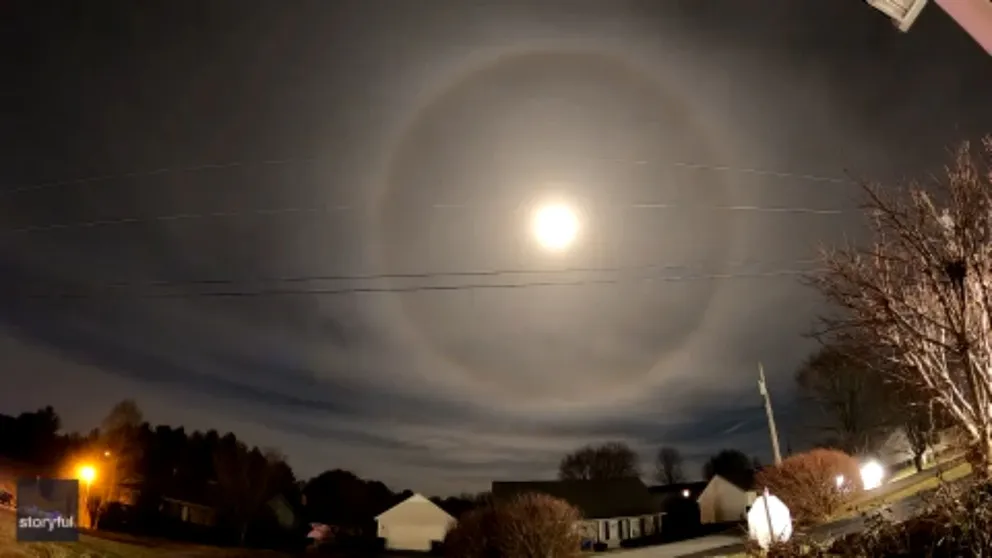What caused this colorful halo around the moon?
While it looked like a rainbow circling the moon in Kentucky on Saturday, the phenomenon is technically not a rainbow. Though, as its colorful counterpart, it is based on sunlight refraction -- or in this case, sunlight reflecting off the moon.
Time lapse video of halo adorning full moon in Kentucky
Those sky gazing Saturday evening around Kentucky were treated to an unusual sight among the heavens: A colorful rainbow-esque halo surrounding the moon. (Video: Johnnie Nicholson via Storyful)
LONDON, Ky. -- Those sky gazing Saturday evening around Kentucky were treated to an unusual sight among the heavens: A colorful rainbow-esque halo surrounding the moon.
Johnnie Nicholson spotted the halo from London and set up a time-lapse camera to record the celestial show as the moon glided across the nighttime skies.
The halo was triggered by ice crystals inside the high, thin clouds that were drifting in front of the moon.
WHY IS THERE A RAINBOW AROUND THE SUN?
While it looked like a rainbow circling the moon, the phenomenon is technically not a rainbow. Though, as its colorful counterpart, it is based on sunlight refraction – or in this case, sunlight reflecting off the moon.
"Some people might call it a rainbow (around the moon), but it's actually caused by ice crystals," says scientist Michael Kavulich with the National Center for Atmospheric Research.

A 22 degree moon halo is spotted in London, Kentucky on Feb. 4, 2023.
(Johnnie Nicholson via Storyful / FOX Weather)
That difference is critical. Raindrops are spherical, but the ice crystals have six sides, similar to snowflakes, which refract moonlight at a different angle.
HOW TO WATCH FOX WEATHER ON TV
In this case, the ice crystals refract the moonlight at a 22-degree angle, creating a colorful halo around the moon at that angle. Similar displays are frequently spotted around the sun when ice crystal-filled cirrus clouds float by during the day.
Halos can be a sign of approaching precipitation
Moon and sun halos can be a good weather prognosticator, as for areas that see mid-latitude storms, halos are noted as signals of rain coming within a day or so. Those cirrus clouds that house the ice crystals needed for the halo display are commonly found in the initial stages of an approaching front or low-pressure system.
Thus, if you see halos around the sun or moon, a sighting of traditional rainbows may not be too far off in the future!
